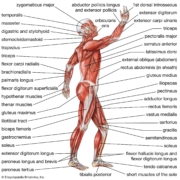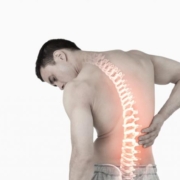5 Unexpected Ways Yoga Boosts Your MSK Health
5 Unexpected Ways Yoga Boosts Your MSK Health
When it comes to maintaining musculoskeletal (MSK) health, many of us think of traditional exercise routines, physical therapy, or perhaps a good stretch here and there. However, there’s an ancient practice that offers a treasure trove of benefits often overlooked: yoga. Beyond its reputation for promoting relaxation and mindfulness, yoga can play a pivotal role in enhancing your MSK health in ways you might not expect. In this listicle, we’ll explore five surprising ways yoga can strengthen your muscles, improve flexibility, and alleviate pain, allowing you to move through life with greater ease and comfort. Get ready to discover how this holistic practice can transform your physical well-being and unlock a new level of vitality!
1) Enhanced Flexibility: Practicing yoga regularly can significantly improve your flexibility, which is essential for maintaining a healthy musculoskeletal system. By incorporating various poses and stretches, you can increase your range of motion and reduce stiffness, making everyday activities easier and more comfortable
Regular yoga practice serves as a powerful tool for enhancing flexibility, which is crucial for a well-functioning musculoskeletal system. As you delve into various poses, each designed to stretch and strengthen different muscle groups, you will find that your body begins to open up in ways you never thought possible. This newfound flexibility can significantly transform your daily life, allowing you to perform routine tasks with greater ease and comfort. Whether it’s reaching for an item on a high shelf or bending down to tie your shoes, improved flexibility reduces the risk of injury and enhances your overall mobility.
Moreover, the gradual progression through different yoga poses encourages not only flexibility but also body awareness. This heightened awareness helps you recognize areas of tightness or discomfort, prompting you to focus on them during your practice. Here are some key benefits of enhanced flexibility through yoga:
- Increased Range of Motion: Improved flexibility allows joints to move more freely.
- Reduced Muscle Stiffness: Regular stretching helps alleviate tension in muscles.
- Better Posture: Enhanced flexibility contributes to a more aligned and balanced posture.
- Improved Athletic Performance: Flexibility is essential for many sports and physical activities.
2) Improved Posture: Yoga encourages body awareness and alignment, helping you develop better posture. This is particularly beneficial for those who spend long hours sitting at a desk or engaging in repetitive movements, as it can alleviate strain on the spine and surrounding muscles, ultimately reducing the risk of injury
Practicing yoga fosters a deep connection between your mind and body, enhancing your awareness of how you hold yourself throughout the day. This mindfulness can translate into daily activities, prompting you to consciously adjust your posture, whether standing, sitting, or moving. By incorporating poses that strengthen the core and open up the chest, you can counteract the slumping that often occurs from prolonged sitting. Common yoga poses that promote better alignment include:
- Mountain Pose (Tadasana) – Encourages proper alignment from head to toe.
- Cat-Cow Stretch (Marjaryasana-Bitilasana) – Increases flexibility in the spine and relieves tension.
- Bridge Pose (Setu Bandhasana) – Strengthens the back and opens the hips.
Moreover, yoga can help alleviate the physical strain caused by repetitive movements and long hours at a desk. As you cultivate better posture, you reduce the likelihood of developing musculoskeletal issues, such as lower back pain or neck strain. Regular practice not only enhances spinal alignment but also promotes muscle balance, ensuring that no single muscle group is overworked. To illustrate the benefits of improved posture, consider the following:
| Benefit | How Yoga Helps |
|---|---|
| Reduced Back Pain | Strengthens back muscles and improves spinal alignment. |
| Increased Energy | Enhances circulation and oxygen flow throughout the body. |
| Better Breathing | Opens the chest and promotes diaphragmatic breathing. |
3) Stress Reduction: The meditative aspects of yoga promote relaxation and stress relief, which can have a profound impact on your musculoskeletal health. Lower stress levels can lead to reduced muscle tension and inflammation, allowing your body to recover more effectively from physical exertion and minimizing discomfort
Engaging in yoga encourages a deep sense of mindfulness that can significantly lower stress levels. This meditative practice allows individuals to focus on their breath and bodily sensations, creating a sanctuary of calm amidst the chaos of daily life. As stress dissipates, the body experiences a corresponding reduction in muscle tension, which can lead to improved flexibility and overall mobility. By fostering a state of relaxation, yoga helps to break the cycle of chronic tension that often plagues the musculoskeletal system.
Moreover, lower stress levels can contribute to decreased inflammation throughout the body. When the mind is at ease, the body is more capable of healing itself, enhancing recovery from physical activity. This phenomenon is particularly beneficial for those engaged in rigorous exercise routines or those recovering from injuries. The following benefits illustrate how yoga’s stress-relieving properties can enhance your musculoskeletal health:
- Improved Circulation: Enhanced blood flow aids in nutrient delivery and waste removal.
- Increased Range of Motion: Reduced tension allows joints to move more freely.
- Better Posture: A relaxed mind promotes awareness of body alignment.
4) Strength Building: Many yoga poses require you to support your body weight in various ways, which helps build strength in both major muscle groups and smaller stabilizing muscles. This functional strength is crucial for maintaining joint stability and preventing injuries, particularly as we age
Engaging in yoga not only enhances flexibility but also serves as a powerful tool for strength development. Many poses, such as Warrior II, Plank, and Chair Pose, require you to support your own body weight, effectively turning your mat into a personal gym. This practice engages major muscle groups like the legs, core, and back while also activating smaller stabilizing muscles that often go unnoticed. As you flow through these poses, you cultivate a functional strength that translates into everyday activities, making tasks like lifting groceries or climbing stairs feel easier and more manageable.
Moreover, the strength gained from yoga is particularly beneficial for joint stability. As we age, maintaining strong muscles around our joints becomes essential in preventing injuries and ensuring mobility. The emphasis on controlled movements in yoga minimizes the risk of strain and promotes proper alignment. Consider the following benefits of strength building through yoga:
- Improved Posture: Strengthening core muscles helps support the spine.
- Enhanced Balance: Stability poses engage the ankle and knee joints.
- Injury Prevention: Stronger muscles around joints reduce the likelihood of injuries.
- Functional Fitness: Everyday movements become easier as strength increases.
5) Enhanced Body Awareness: Yoga fosters a deeper connection between your mind and body, encouraging you to listen to your body’s signals. This heightened awareness can help you identify areas of tension or discomfort early on, enabling you to address potential issues before they escalate into more significant musculoskeletal problems
Practicing yoga cultivates a profound connection between your mind and body, allowing you to become more attuned to your physical sensations. This enhanced body awareness encourages you to pay closer attention to the signals your body sends, whether it’s a subtle tightness in your shoulders or a lingering ache in your lower back. By recognizing these signs early on, you can take proactive measures to alleviate tension and discomfort, preventing them from developing into more serious musculoskeletal issues. This self-awareness transforms your approach to movement, making you more mindful in your daily activities.
Moreover, yoga’s focus on breath and alignment helps you develop a deeper understanding of your body’s mechanics. As you flow through various poses, you learn to identify which movements feel nourishing and which may lead to strain. This knowledge empowers you to modify your activities to suit your body’s needs better. Consider the following benefits of enhanced body awareness:
- Early Detection: Spot discomfort before it escalates.
- Injury Prevention: Adjust movements to avoid strain.
- Improved Posture: Recognize and correct alignment issues.
- Mindful Movement: Engage in activities with intention.
- Holistic Health: Foster a balanced relationship with your body.
The Way Forward
As we’ve explored the five unexpected ways yoga can enhance your musculoskeletal health, it’s clear that this ancient practice offers more than just physical postures. From improving flexibility and strength to fostering mindfulness and stress relief, yoga serves as a holistic approach to well-being that resonates deeply with our bodies’ needs. Whether you’re a seasoned yogi or a curious newcomer, integrating these insights into your routine can lead to profound improvements in your overall health. So, roll out your mat, take a deep breath, and embrace the transformative power of yoga—your musculoskeletal system will thank you. Remember, every small step counts on your journey to wellness. Namaste.










Leave a Reply
Want to join the discussion?Feel free to contribute!